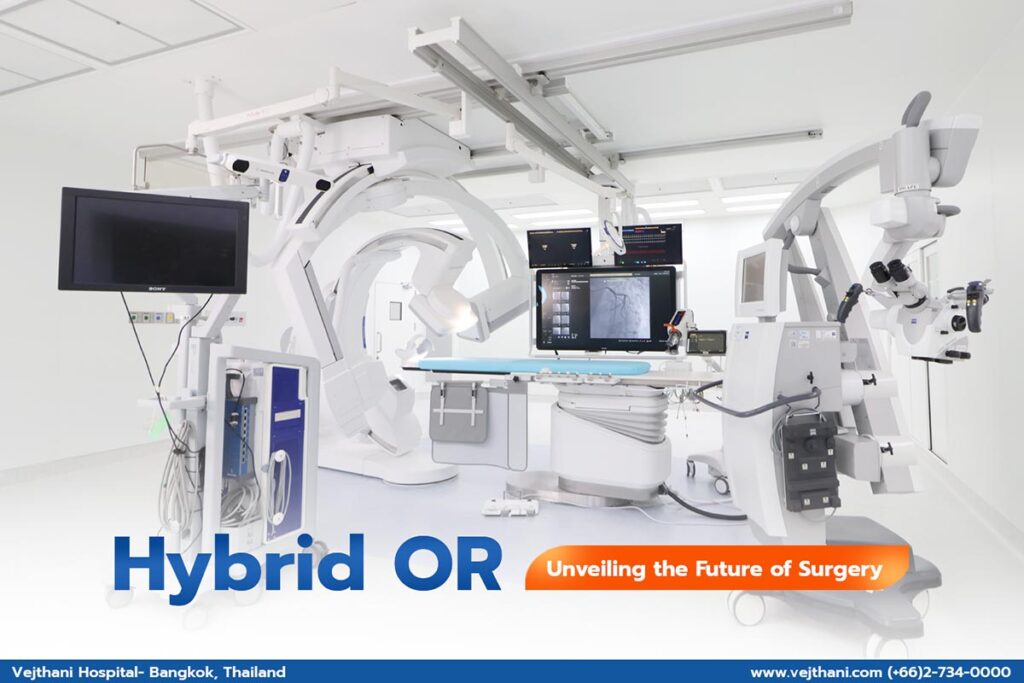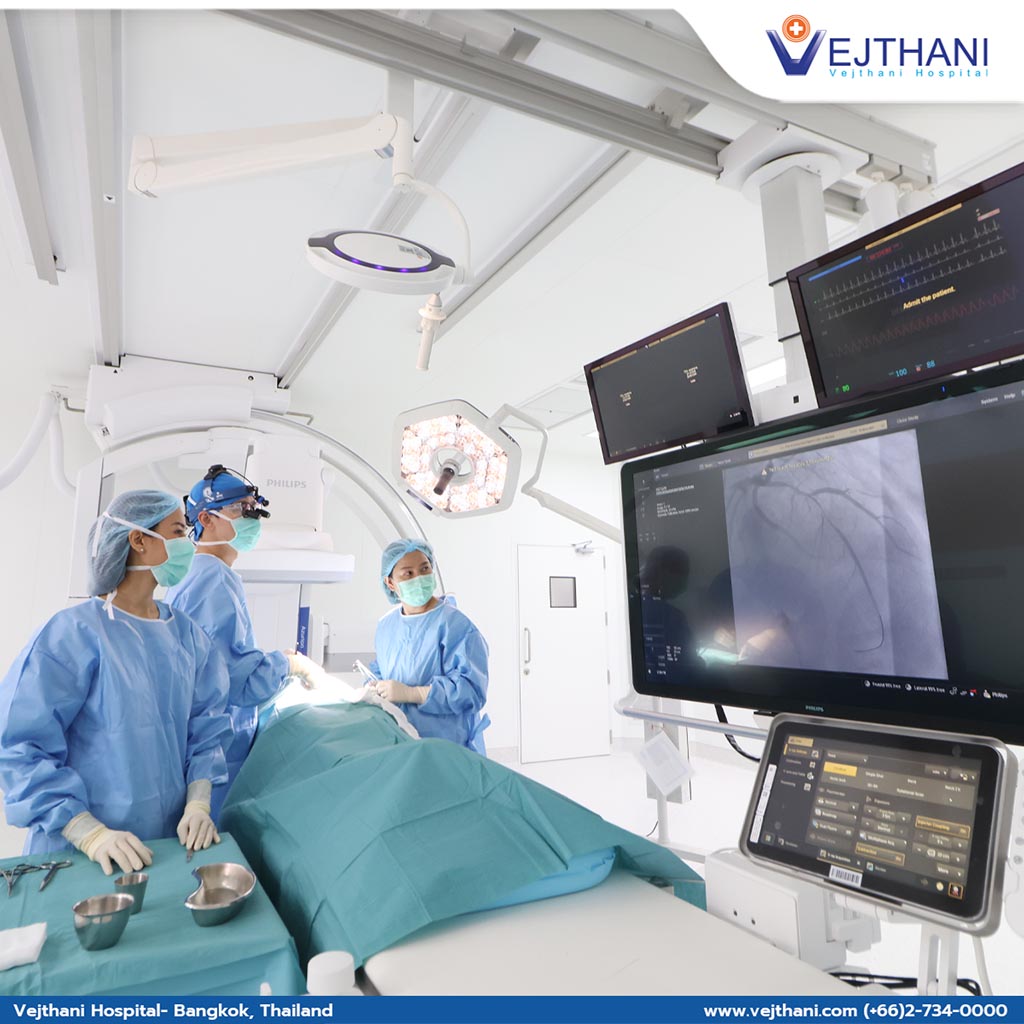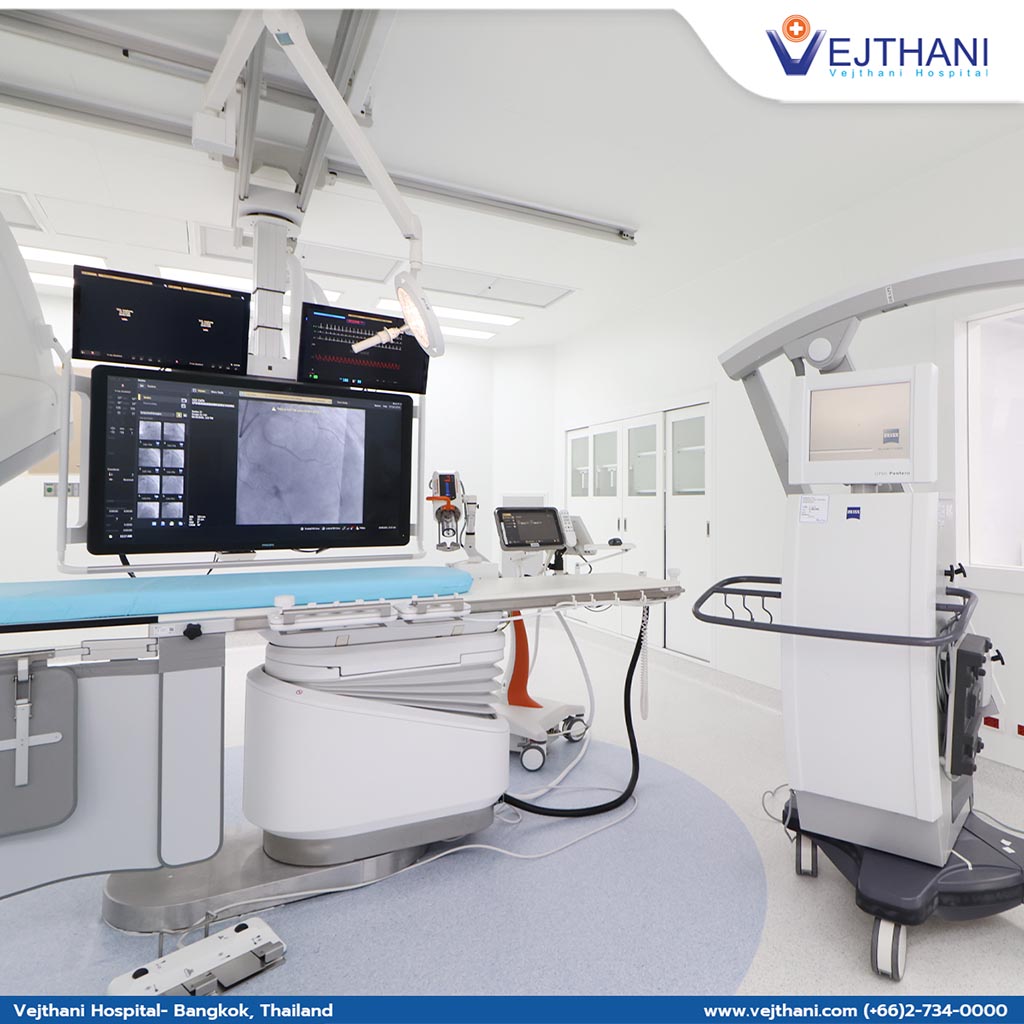

A Hybrid Operating Room (Hybrid OR) is a surgical room that combines the features of a traditional Operating Room (OR) and an interventional radiology suite, which includes advanced medical imaging technologies such as Computed Tomography (CT), fluoroscopy, Magnetic Resonance Imaging (MRI), ultrasound, and C-arm, which is a portable X-ray machine that rotates around the patient. These advanced imaging technologies allow surgeons to perform a broader range of procedures while having real-time visualization of the patient’s anatomy, enabling surgeons to perform minimally invasive interventions with greater precision and accuracy.
Hybrid ORs are used for a variety of procedures, including:
- Heart valve repair or replacement
- Carotid endarterectomy (removes plaque from the carotid artery)
- Tumor removal
- Spinal surgery
- Liver surgery
- Kidney surgery
- Vascular surgery
Hybrid ORs are still a relatively new technology but are becoming increasingly popular. They offer several advantages over traditional ORs, including:
- Enhanced precision and accuracy: Incorporating advanced imaging technology within hybrid operating rooms allows surgeons to observe the patient’s internal anatomy in real-time, which helps them to plan and perform procedures more precisely. This can result in improved outcomes for patients.
- Reduced risk of complications: Using minimally invasive techniques in hybrid ORs can help diminish the risk of infection and bleeding, resulting in a shorter recovery time.
- Increased flexibility: Hybrid ORs can be used to perform multiple types of procedures than traditional operating rooms. This can be beneficial for patients who need complex or specialized care.
Key features of a hybrid OR include:
- Advanced Imaging Equipment: A hybrid OR is equipped with high-quality medical imaging equipment that provides real-time images of the patient’s anatomy during surgery, enabling the medical team to monitor the surgery as it progress and make adjustments as needed.
- Integration of Technology: Hybrid ORs are designed to integrate various imaging systems seamlessly with surgical tools and equipment. This integration facilitates efficient communication and coordination among the surgical team members.
- Collaborative Environment: The hybrid OR is equipped to support multidisciplinary collaboration. Surgeons, radiologists, anesthesiologists, and other specialists can work together in real-time to make informed decisions during complex procedures.
- Reduced Radiation Exposure: The availability of advanced imaging techniques can reduce the need for separate pre-operative imaging sessions, minimizing radiation exposure for the patient.
- Complex Cardiovascular and Neurosurgical Procedures: Hybrid ORs are often used for complex cardiovascular and neurosurgical interventions, such as angioplasty, stent placement, valve replacement, and intricate brain surgeries.
- Training and Research: Hybrid ORs also serve as valuable medical training and research tools. They provide a controlled environment for medical professionals to learn and practice new techniques.
A hybrid operating room represents an innovative approach to surgical care that combines cutting-edge imaging technology with surgical expertise to enhance patient outcomes and enable a wide range of intricate procedures. It is essential to talk to your doctor about whether a hybrid operating room would be a better choice than a traditional operating room.




- Readers Rating
- Rated 4.1 stars
4.1 / 5 ( Reviewers) - Excellent
- Your Rating
























